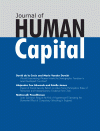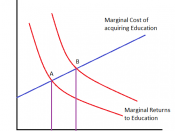Introduction
Discussion of human capital accumulation occurs frequently in the recent literature as a key outcome of human resource development (HRD) (Antonacopoulou and Fitzgerald, 1996; Huselid, 1994). A number of influential models of HRD specify a range of HRD practices which, if pursued, are likely to contribute to human capital accumulation (De Geus, 1997; Currie, 1998; McCracken and Wallace, 2000; Wills, 1997). These models basically advocate that investment in HRD by organisations and individuals is necessary for a number of reasons; to build and to maintain that resource in the future and to retain that resource in the present. Prickett (1998) reports that London University's survey of graduates found that over 90 per cent expect their employer to help their development. Holbeche (1998) found that one-third of her sample of high-fliers would leave if they could not broaden their skills. These studies reveal that individuals place considerable value on the investments that organisation's make in their human capital enhancement.
There is also evidence that organisations' likewise view investments in human capital to be important. Losey (1999) and Spangenberg et al. (1999), among others, report that increasingly organisations seek, through the implementation of sophisticated human resource development and workplace learning, strategies to develop employee competencies to enable them to respond quickly and flexibly to business needs. This perspective on human capital takes as its starting point, the view that human competencies are one of the resources available to organisations. The origins of this notion of human capital can be attributed to the work of Prahalad and Hamel (1990) who analysed the competitiveness of organisations and attributed it to the possession of core competencies. They postulated that an organisation can possess unique clusters of factors that allows it to be competitive and human capital is one of these. This resource-based view represents...



Best essay on cheat house
One of the best essay I read on CheatHouse; thumbs up to the author of this essay. Great, buddy, keep going.
1 out of 2 people found this comment useful.